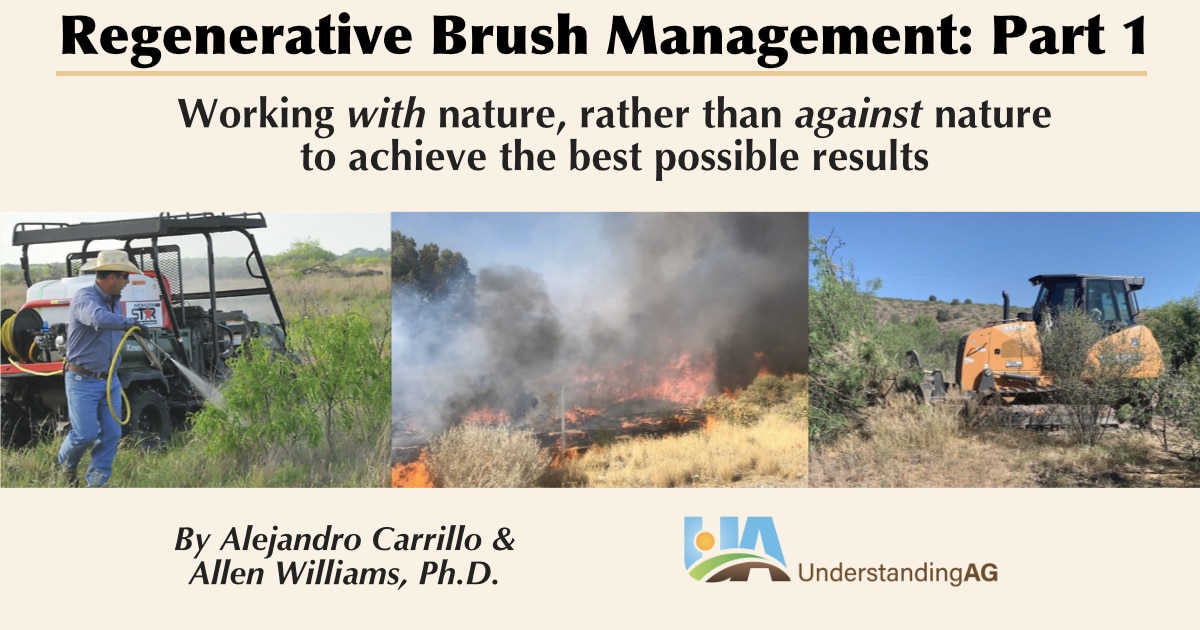
During the past 100 years, we have been taught to eradicate plants that we perceive as a threat to what we term “desirable species.” It is true there are invasive plants that were introduced from some other place in the world—species that can overwhelm plants that we believe we want in our ecosystem. These plant species include Chinese Tallow, Leafy Spurge, Cheatgrass, and many others.
Our Misperceptions
However, many of the plants we believe we do not want include species that are native to our part of the world. These include mesquite, sage, honey locust, etc. We have to ask ourselves the question, “Why do we want to eradicate these plants?” Ironcially, we often want a plant that is not native to our area to be the dominant plant. That may include bermudagrass, Bahia grass, Fescue and Smooth Brome. So, we are trying to eradicate a native plant to replace with a non-native?
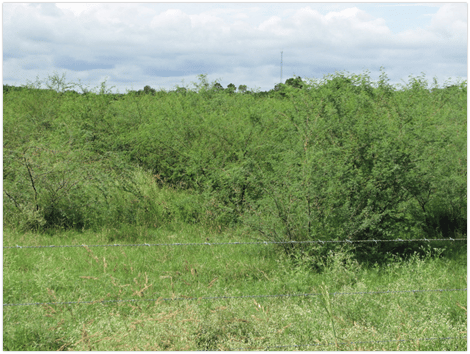
All plants have a purpose. That is what we must realize. All plants are there to perform specific vital functions for life in and above the soil. It is only when those plants become the dominant species in our system that we start to complain. So, the next question we have to ask is, “Why did they become a dominant species?” The answer is always, “Because we (someone who has managed the land in the past or the present) are responsible for any specific plant dominating.” Our problem is we do not want to view ourselves as the creators of our own problems. We blame the plant. We blame someone else for having spread the plant or it’s seed. We blame wildlife for spreading the seed. We blame everyone and everything except ourselves and our management.
Because of this, we have been educated to eradicate any plant we deem “undesirable,” and we never consider that we are trying to replace that plant with another plant that is non-native. We do not consider that we are maybe trying to replace our problem plants with a low-diversity system that limits our soil biology, nutrient cycling, and water cycling capabilities. Why are our western landscapes experiencing an ever-increasing lack of water and diversity? Because we implemented practices that encouraged these things to occur.
We view many plants as problematic. These include species such as mesquite, cacti, cholla, cat’s claw, juniper, sage, honey locust, and many others. We view these plants as “pests” that rob our other plants of water and nutrients. We believe they are stealing away our precious grasslands. Do we stop to consider that these plants have been there for millennia and co-existed with our grasslands, within those grassland systems? They did not dominate because we had a multiplicity of wild ruminants and a functional predator population that helped keep things in balance. They became a problem when we mismanaged the lands that we steward. When they got out of balance, we determined that we had to kill those plants and replace them with low diversity species that we imported from Europe, Asia, Africa, and other continents.
The same goes for animal species that we now view as pests, such as the Prairie Dog. Prairie Dog Towns actually perform crucial ecological functions and are a natural part of fully functioning grasslands. Their populations historically moved around from place to place over time and left behind grasslands that performed better after their presence. They created biological hotspots and supported an array of predators that fed on the prairie dog populations.
Because of human mismanagement, we find ourselves in situations where certain plant species dominate. This certainly includes woody species (brush). They can become so dominant that we are forced to resort to mechanical or chemical means to start a control process.
Conventional Control
There are three primary ways we are typically taught to control bushy species. These involve mechanical or chemical interventions, and planned burns. Sometimes, we combine two or more of these in our efforts to control the problem species. The issue is that rarely does one or more of these methods correct the issue long-term, if we continue to manage our grazing similarly to what we were doing prior to the intervention. We find ourselves repeating these interventions over and over through the years. They are never successful if we do not also change our grazing management.
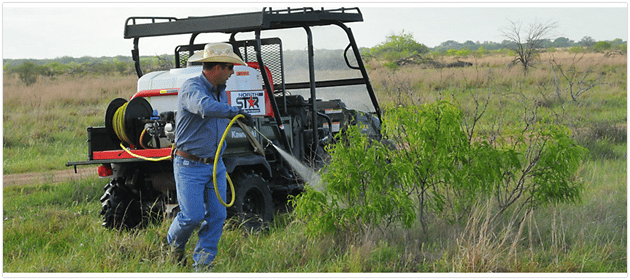
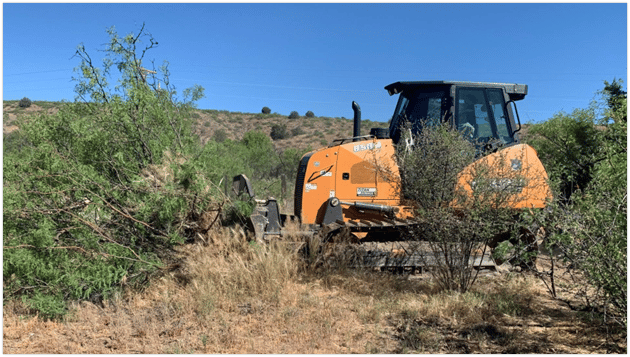
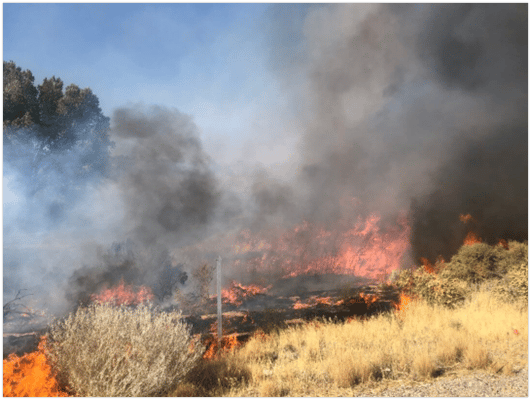
All of these methods require a lot of time, labor and expense. They all damage our soil biology, our ecosystem diversity, and damage the water cycle. They also decrease plant species diversity. We have to realize that we cannot jump from heavy brush to thriving grassland overnight. There is a natural succession that must occur for true success. Often, this involves plants we call “weeds” appearing first to pave the way for more desirable grasses, legumes and forbs. But first, we must build the soil biology to support the grassland species. Our perception is that if weeds are growing after using mechanical, chemical or planned burn interventions, we then have to kill the weeds. We falsely believe that if these weeds are allowed to grow, we will have nothing but weeds from that point forward.
What we do not see is that these weeds not only build soil biology and structure, but they attract an array of beneficial insects, pollinators, and bird species. They build the soil biological profile that is necessary for grasses and legumes to thrive. These weeds are also nature’s pharmacy, growing plants that are medicinal and anti-parasitic in nature. Nature will grow these succession species until they are no longer needed and then grasses and legume species will become more dominant.
A Better Way
There are far more effective and economical ways to control brush. The more conventional methods all require fuel, chemicals, repair and maintenance, including seed and fertilizer, depreciation, insurance, labor, etc. Implementation of the basic principles of regenerative agriculture allow us to be more effective and more economical. These principles are summed up in what we refer to as the 6-3-4TM. They are the Six Principles of Soil Health, the Three Rules of Adaptive Stewardship and the Four Ecosystem Processes (Fact Sheets - Understanding Ag). If we feel we have to use a mechanical and/or chemical intervention, or fire, to gain initial control, we must follow that up with ongoing regenerative management.
In the past, nature supplied a multitude of wild ruminant species, such as bison, antelope, elk and deer that had a significant impact on keeping woody and brushy plant species under control. If you have ever watched a bison work over a tree of bush, you quickly understand how they kept prairies and savannas intact as functional ecosystems.
In our management, we can use a single species, such as cattle. However, we can make much faster progress if we mimic nature and employ two or more species. That can include cattle, goats, sheep, pigs, donkeys and even poultry.
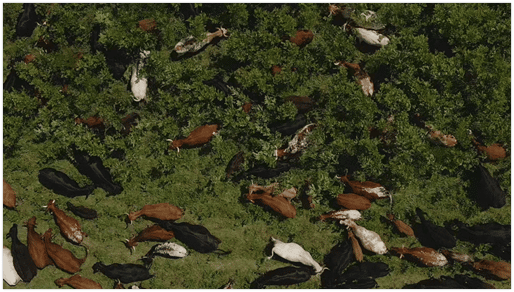
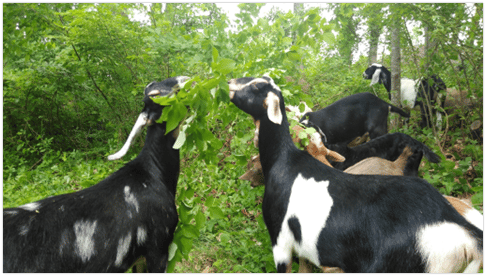
By using these livestock species to properly implement regenerative grazing we can be successful in controlling brushy species and in establishing highly functioning ecosystems. We can do this with far less expense and far better results but realized that this takes time. So patience is a virtue here.
Here are a few key things we have learned along the way:
• There is a reason woody species exist in an ecosystem. They are there to help cover the soil and feed the biology.
• Whatever is growing is a result of our management or past management.
• We often do not understand how nature works and that everything has a purpose.
• Grasslands, when grazed regeneratively, will outcompete woody species and will work with soil biology to produce the ideal bacterial to fungal ratio in the soil. This does not mean there will be no woody species at all. Remember they have a purpose.
• Nature knows when woody species or cacti are no longer needed as a dominant part of the landscape.
• We have personally witnessed how mesquite, locust, cacti, and other species recede as perennial grasses take over in a proper succession.
• As we facilitate the proper transition or succession, we see an explosion of beneficial insects, birds and plant species that usher in a correctly balanced ecosystem. This includes pollinators, dung beetles, termites, and many other desirable species.
• We can encourage the proliferation of nitrogen-fixing plants and microbes and termites that have a gut rich with plant-available nitrogen.
• As we do a better job of mimicking nature, we facilitate better ecosystem processes and far better productivity.
• Our landscape is a reflection of our management and of us.
• There are no shortcuts in nature. We must be patient and allow natural regeneration to take place through our regenerative management practices.
Summary
To do a better job at brush management, we have to first understand why the problem exists, then change the way we think about the problem. Using the tools that we already have on our ranches and farms, namely our livestock as our primary method of control, allows us to be effective long-term and to generate far more net revenue. In the case of brush management, less is more. Work with nature, rather than against nature, to achieve the best possible results.
We will do a deeper dive into regenerative brush management in Part II of this series.
